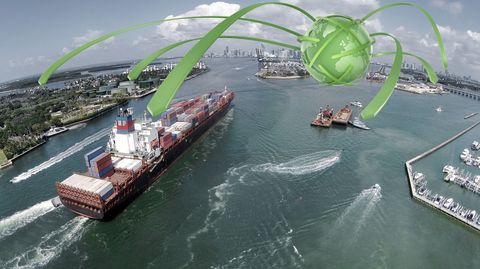As the fastest-growing economy in the world, India is becoming an increasingly attractive target for trade and investment, with partners seeing considerable potential for expansion in a burgeoning market.
Naturally, the European Union is no exception to this and has been making active efforts to bolster its trade ties with the country in recent years, but to date these endeavors have been impaired somewhat by regulatory hurdles and a lack of a unified approach to trade liberalization.
As such, the two territories are currently working to secure a new free trade agreement (FTA) that could solve the vast majority of these issues, with a recent report by the Bertelsmann Stiftung indicating that such a deal could deliver significant benefits for both the EU and India.
The current state of play
As of 2016, reciprocal trade volumes for goods between the EU and India stood at around €77 billion, with Europe ranking as India's number one trading partner, accounting for 13.5 per cent of its overall trade with the world in 2015-16.
The EU also sees India as a key strategic partner, with a potential customer base of more than 1.3 billion people, yet despite this the country ranks as only the ninth-largest EU trading partner, accounting for a comparatively small 2.2 per cent share of the EU's overall international trade.
Although growth is taking place - trade in services, for example, has almost tripled in the past decade - the European Commission has noted that India's trade regime and regulatory environment "remains comparatively restrictive", which is preventing further growth from being achieved.
However, the EU remains keen to address this problem citing India's "rapid growth, complementary trade baskets and relatively high degree of market protection" as reasons why it would make an "obvious partner for an FTA". As such, the regions have been holding negotiations over such a deal since 2007.
The potential benefits for India
In the Bertelsmann Stiftung analysis of the potential outcomes of this deal, economic expert Cora Jungbluth described India as "a dwarf as far as world trade is concerned", accounting for only 1.6 per cent of global merchandise exports at present. As such, a forward-thinking FTA with the EU could play a key role in turning this situation around.
The report estimated that India could increase its economic performance by 1.3 per cent annually, or an increase of around €25.6 billion. The Indian business services and textiles sectors are set to experience the most pronounced growth, with expected value gains of €6 billion and €3.3 billion, respectively.
On a broader basis, it would mark a significant step towards greater economic openness for India, with a positive impact on innovation, productivity and growth to be expected - although the Bertelsmann Stiftung also noted that certain sectors may shrink due to pressure from increased international competition, including the motor vehicle and mineral industries.
The potential benefits for the EU
For the EU, assessing the impact of an FTA with India is more complex due to the multifaceted economic makeup of the bloc, but annual GDP increases for the EU could be reasonably expected to hit 0.14 per cent on average - an increase of €21 billion, based on EU GDP figures for 2015.
Individual member states would see different degrees of benefit from such an agreement, with Germany - India's biggest trade partner in the EU - achieving an absolute gain of €4.6 billion, making it the leading beneficiary aside from the UK, which is soon to leave the union. Croatia, by contrast, would see a much smaller boost of only €20 million.
However, Ms Jungbluth noted that no EU member state would suffer overall negative effects, which she said is "by no means a foregone conclusion when calculations of this kind are made". This offers insight into why the EU is pursuing the deal with such enthusiasm.
Will an FTA come to fruition?
Although the benefits for both sides appear relatively clear, progress on negotiating an agreement has been intermittent since 2007, even though an EU sustainability impact assessment in 2009 confirmed the economic potential of an FTA.
Discussions are currently focused on a number of outstanding issues, including improved market access for certain goods and services, government procurement, geographical indications, sound investment protection rules, and sustainable development. It is not currently known when a resolution might be achieved, though it is expected that any benefits would be fully felt ten to 12 years after the agreement comes into effect.
Nevertheless, if a deal can be struck, an EU-India FTA would represent one of the most significant trade agreements in European history, with Ms Jungbluth expressing confidence that it "would not only have a positive economic impact, but could also be an important signal in favor of free trade in general".






